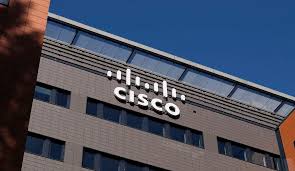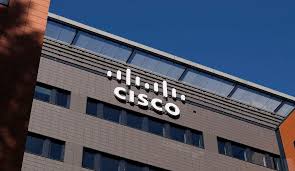
In 2024, the International Energy Agency (IEA) reported that data centers consumed about 1.5% of the world’s electricity. This figure is expected to more than double by 2030, mainly driven by the growth of AI infrastructure. To put this in context, such an increase would equal Japan’s current total electricity usage.
The question arises: how can we accommodate the growing energy demands—not only from AI but also from other digital technologies and the electrification of sectors like transportation and buildings?
Although this challenge seems significant, there is hope. Several innovations and technological advancements are emerging, such as more energy-efficient data centers, progress in liquid cooling techniques, better software optimization, enhanced energy security, and exploration of alternative energy sources.
Recently, I had the chance to discuss the future of energy with Mary de Wysocki, Cisco’s SVP and Chief Sustainability Officer; Adele Trombetta, Cisco’s SVP & GM for CX EMEA; and Christopher Wellise, VP of Sustainability at Equinix—a Cisco client that offers global digital infrastructure and colocation services. Here are some key insights from our conversation.
Q: How are customers adapting their strategies considering the current energy landscape?
Adele: Customers and partners are increasingly pushing for AI deployments to harness its benefits and remain competitive, across both public and private sectors. While there is undeniable pressure, the energy consumption of AI, especially generative AI and large language models (LLMs), is a growing concern. Many clients in Europe, the Middle East, and Africa (EMEA) have set net-zero goals, so they’re integrating sustainability into their AI adoption strategies from the outset rather than as an afterthought. It’s about balancing AI growth with energy impact management.
Mary: Perspectives differ depending on whether you speak with customers, partners, or suppliers, but a common theme is resilience. There's a strong emphasis on proactive investments to secure future energy availability. Collaboration and co-investment opportunities are becoming crucial. The focus remains on achieving growth, resilience, and sustainability together.
Chris: Key priorities among customers include resilience and reliability, ensuring uninterrupted application performance. Regulatory compliance is also critical, especially in regions like the EU with energy efficiency directives. Customers seek comprehensive solutions that optimize operations across the value chain and support sustainability reporting. As hybrid multi-cloud adoption grows, optimizing energy use across platforms and regions is a major focus. Partnerships are essential; for instance, 70% of devices connected to the Equinix fabric utilize Cisco technology, illustrating the value of supplier collaboration.
Q: What technological progress is being made in data centers to support the AI surge and manage energy needs?
Mary: Creating products that prioritize energy efficiency is essential for achieving business goals and sustainability. For example, Cisco’s Silicon One chip is designed to be energy-efficient while supporting AI workloads, helping customers lower power use without sacrificing performance. Another key innovation is the Sustainability Data Foundation (SDF), which centralizes data for tracking carbon footprints and advancing net-zero objectives. This empowers tech leaders with actionable insights for managing energy consumption and sustainability efforts.
Chris: Efficiency-focused design is critical. Since 2021, all new Equinix data centers aim for LEED or similar green certifications to ensure sustainable design and construction. Because data centers have lifespans of 20–30 years, optimization in both design and operations is necessary. Cooling is especially important, often accounting for over half of energy use. Over 100 Equinix data centers now employ liquid cooling technologies, such as direct-to-chip cooling systems that remove heat efficiently while preventing erosion and biofouling. This waste heat can be repurposed—for example, in Helsinki, heat from data centers warms thousands of homes, and during the Summer Olympics, pools were heated using data center heat. Additionally, AI-driven software creates digital twins that optimize cooling settings and reduce energy usage.
Adele: Cisco integrates sustainability and security into product design, responding to customers’ growing interest in understanding how technology is deployed and managed to address energy, performance, and AI challenges. According to Gartner, by 2030 over 70% of data centers will monitor sustainability metrics, up from about 10% today. Collaboration across partners and customers is essential to modernization and resource efficiency. Handling diverse data—from networking gear to grid and weather data—is complex but crucial. With tools like Splunk, these data streams can be streamlined to provide insights that drive optimization.
Q: How capable is the global electricity infrastructure in meeting rising energy demand?
Chris: The main challenge is not so much supply but distribution, which varies by region. In the U.S., aging infrastructure and complex regulations complicate matters. Europe sees rapid renewable energy growth but struggles with grid integration. Asia presents a mixed picture, with quick renewable expansion alongside continued fossil fuel reliance. Addressing both supply and distribution is critical.
Mary: Generative AI’s heavy energy needs raise concerns about reliable grid access. In places like New York City, the grid is outdated and fragile—70% of transmission lines are over 25 years old. AI holds potential to tackle some of these challenges but requires grid and data center modernization. Industrial IoT can help develop smarter, more secure grids that optimize energy use, support diverse sources, and enable predictive maintenance.
Adele: We work with customers leading digital transformation, including energy firms supporting national infrastructure. Our focus is on building smart, efficient grids. While AI is still emerging in this space, ongoing collaboration with utilities is key to meeting future demands flexibly.
If you want to dive deeper into how AI is shaping the future of energy, join me at Cisco Live US in San Diego from June 8-12 for an in-person discussion.
The session is scheduled to take place on Tuesday, June 10 from 2 to 2:30pm PT. Click here to register.
The question arises: how can we accommodate the growing energy demands—not only from AI but also from other digital technologies and the electrification of sectors like transportation and buildings?
Although this challenge seems significant, there is hope. Several innovations and technological advancements are emerging, such as more energy-efficient data centers, progress in liquid cooling techniques, better software optimization, enhanced energy security, and exploration of alternative energy sources.
Recently, I had the chance to discuss the future of energy with Mary de Wysocki, Cisco’s SVP and Chief Sustainability Officer; Adele Trombetta, Cisco’s SVP & GM for CX EMEA; and Christopher Wellise, VP of Sustainability at Equinix—a Cisco client that offers global digital infrastructure and colocation services. Here are some key insights from our conversation.
Q: How are customers adapting their strategies considering the current energy landscape?
Adele: Customers and partners are increasingly pushing for AI deployments to harness its benefits and remain competitive, across both public and private sectors. While there is undeniable pressure, the energy consumption of AI, especially generative AI and large language models (LLMs), is a growing concern. Many clients in Europe, the Middle East, and Africa (EMEA) have set net-zero goals, so they’re integrating sustainability into their AI adoption strategies from the outset rather than as an afterthought. It’s about balancing AI growth with energy impact management.
Mary: Perspectives differ depending on whether you speak with customers, partners, or suppliers, but a common theme is resilience. There's a strong emphasis on proactive investments to secure future energy availability. Collaboration and co-investment opportunities are becoming crucial. The focus remains on achieving growth, resilience, and sustainability together.
Chris: Key priorities among customers include resilience and reliability, ensuring uninterrupted application performance. Regulatory compliance is also critical, especially in regions like the EU with energy efficiency directives. Customers seek comprehensive solutions that optimize operations across the value chain and support sustainability reporting. As hybrid multi-cloud adoption grows, optimizing energy use across platforms and regions is a major focus. Partnerships are essential; for instance, 70% of devices connected to the Equinix fabric utilize Cisco technology, illustrating the value of supplier collaboration.
Q: What technological progress is being made in data centers to support the AI surge and manage energy needs?
Mary: Creating products that prioritize energy efficiency is essential for achieving business goals and sustainability. For example, Cisco’s Silicon One chip is designed to be energy-efficient while supporting AI workloads, helping customers lower power use without sacrificing performance. Another key innovation is the Sustainability Data Foundation (SDF), which centralizes data for tracking carbon footprints and advancing net-zero objectives. This empowers tech leaders with actionable insights for managing energy consumption and sustainability efforts.
Chris: Efficiency-focused design is critical. Since 2021, all new Equinix data centers aim for LEED or similar green certifications to ensure sustainable design and construction. Because data centers have lifespans of 20–30 years, optimization in both design and operations is necessary. Cooling is especially important, often accounting for over half of energy use. Over 100 Equinix data centers now employ liquid cooling technologies, such as direct-to-chip cooling systems that remove heat efficiently while preventing erosion and biofouling. This waste heat can be repurposed—for example, in Helsinki, heat from data centers warms thousands of homes, and during the Summer Olympics, pools were heated using data center heat. Additionally, AI-driven software creates digital twins that optimize cooling settings and reduce energy usage.
Adele: Cisco integrates sustainability and security into product design, responding to customers’ growing interest in understanding how technology is deployed and managed to address energy, performance, and AI challenges. According to Gartner, by 2030 over 70% of data centers will monitor sustainability metrics, up from about 10% today. Collaboration across partners and customers is essential to modernization and resource efficiency. Handling diverse data—from networking gear to grid and weather data—is complex but crucial. With tools like Splunk, these data streams can be streamlined to provide insights that drive optimization.
Q: How capable is the global electricity infrastructure in meeting rising energy demand?
Chris: The main challenge is not so much supply but distribution, which varies by region. In the U.S., aging infrastructure and complex regulations complicate matters. Europe sees rapid renewable energy growth but struggles with grid integration. Asia presents a mixed picture, with quick renewable expansion alongside continued fossil fuel reliance. Addressing both supply and distribution is critical.
Mary: Generative AI’s heavy energy needs raise concerns about reliable grid access. In places like New York City, the grid is outdated and fragile—70% of transmission lines are over 25 years old. AI holds potential to tackle some of these challenges but requires grid and data center modernization. Industrial IoT can help develop smarter, more secure grids that optimize energy use, support diverse sources, and enable predictive maintenance.
Adele: We work with customers leading digital transformation, including energy firms supporting national infrastructure. Our focus is on building smart, efficient grids. While AI is still emerging in this space, ongoing collaboration with utilities is key to meeting future demands flexibly.
If you want to dive deeper into how AI is shaping the future of energy, join me at Cisco Live US in San Diego from June 8-12 for an in-person discussion.
The session is scheduled to take place on Tuesday, June 10 from 2 to 2:30pm PT. Click here to register.


 Rising Energy Demand from AI: Innovations in Data Centers & Sustainability
Rising Energy Demand from AI: Innovations in Data Centers & Sustainability




 Companies
Companies